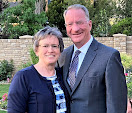"Death and Dying Can Be Learned Down By the Slough"
Darrel L. Hammon
Some learn the meaning of death the hard way. But I was introduced to death at an early age. Growing up in the country and having animals somehow present death earlier in one’s life and in a more crude and sometimes harsh way. Nonetheless, death of anything can be a master teacher. Although I saw many animals die, perhaps the death of one of my horses taught me more than I wanted to know about death.
While some Boy Scout troops went to Boy Scout Camp, our scout troop went horseback riding in the Kilgore area. I remember my first experience going with the older scouts to Kilgore. I had purchased a green-broke, three-year old filly. Because of her Welsh background, she was smaller than most other horses, but she was strong and vigorous and just my right size.
I bought her earlier that spring, thinking I could have a good mountain horse ready before our summer jaunt to Kilgore. We usually tried to go sometime after the first cutting of alfalfa.
Prior to our going, we had to shoe our horses. On the appointed morning, I saddled up my horse and headed to my Uncle Wilford’s house, which was about a mile away. I stayed in the barrow pit that ran along the highway between Menan and Roberts. She tried to crow foot a couple of times and tried to give me the boot, but somehow I managed to stay on.
After some minutes, I reined her in at Uncle Wilford’s. I carefully dismounted, tied her up at the fence, and walked to his house. After sitting there for a bit, someone came by and told me we were going to go to Uncle Milt’s house which was about 1/4 of a mile away.
As I tried to get back on, she wouldn’t let me. After awhile, though, I finally convinced her it was all right for her to let me on. Some struggles later, we both ended up in Uncle Milt’s huge circular driveway. My other friends were already there and waiting. But I had arrived before the horse shoer did.
Before too long, an old pickup turned off the highway and rattled its way into the yard. We watched as the door opened, and a woman exited the pickup on the driver’s side and older gentleman on the other.
We just looked at each other. Here was the shoer (a.k.a. “ferrier”) woman. She was definitely much bigger than the rest of us. She wore jeans and boots and looked tough as nails. The man with her who happened to be her husband seemed a bit timid and feeble. She, on the other hand, was just the opposite. Had we known her temperament, we probably would have told her to get back in the truck and make dust out of there. But we didn’t. What do 14-year-olds know?
She started with the first horse. Instantly, we could tell this woman meant business, and no horse in its right mind would do anything to cause her to lose her temper. She was big and tough, her voice was loud, and she made sure the horses knew it. I was extremely glad I wasn’t the one being shod that day.
Soon it was my horse’s turn. She had been watching the entire ordeal and the pain the ferrier had inflicted on the other horses, and she was terrified. She had never been shod before, and I could tell it would be a cold day before she was ready for shoes.
The woman ferrier didn’t see it that way. She grabbed her halter rope and told her to be good. Unfortunately, my horse wasn’t good. She danced. She jumped. She swayed this way and that. After several harsh words and a few whacks, the ferrier did something that astounded us. She picked up picked my pony off her feet—literally picked her up—and threw her to the hard, cobblestone ground. That knocked the wind right out of my horse.
I was too scared to say anything. The young men who were standing by my side and I froze in our tracks. Our shyness and fear of this woman kept us from saying anything. After my horse struggled back to her feet, the ferrier pounded on the shoes while my horse stood there shaking, her head bent low to the ground.
After the ordeal, I rode her home. She wasn’t the skittish horse I had ridden down. Upon arriving home, I lead her out to the pasture, unsaddled her, curry combed her, patted her down, and gave her a generous amount of hay and some grain. Then, I just stood back and watched her. She definitely had been through an ordeal today.
The next day, I went out to see how she was doing. She was standing in the middle of the ditch and looked terrible. I tried to shoo her out of the ditch but to no avail. I rushed in the house and called my dad at work and told him what the problem was. He told me to call the vet.
Unfortunately, nothing worked. My three-year horse died a couple of days later of internal injuries. Back then, we weren’t in the suing mood, and animal cruelty wasn't what it is today; so, we did the inevitable. My brother, our friends, and I and went out into the pasture down by the slough and dug a very deep hole. We hooked a chain on the tractor and dragged my filly down to her final resting place. After saying a few words, we covered her up with dirt.
I probably should have buried her with her shoes on. But the way I figured it, she didn’t want them on in the first place. That’s what got her killed. Before we dragged her away, I carefully and respectfully pried off her new shoes and hung them in the barn.
As far as I know, those shoes still hang in the barn as a reminder of that fateful experience. Sometimes, death and dying can be learned best from animals or just being down by the slough on a warm afternoon, surrounding a fresh grave.










2 comments:
I loved reading this. I love seeing the words "Uncle Wilford" and "Uncle Milt" in writing. So many memories of them come rushing back to me. I'm sorry your prized horse had to die like that. Makes me feel sick inside.
Thanks for the note. I, too, enjoy seeing my uncles' names in print. They were great influences in my life.
Post a Comment